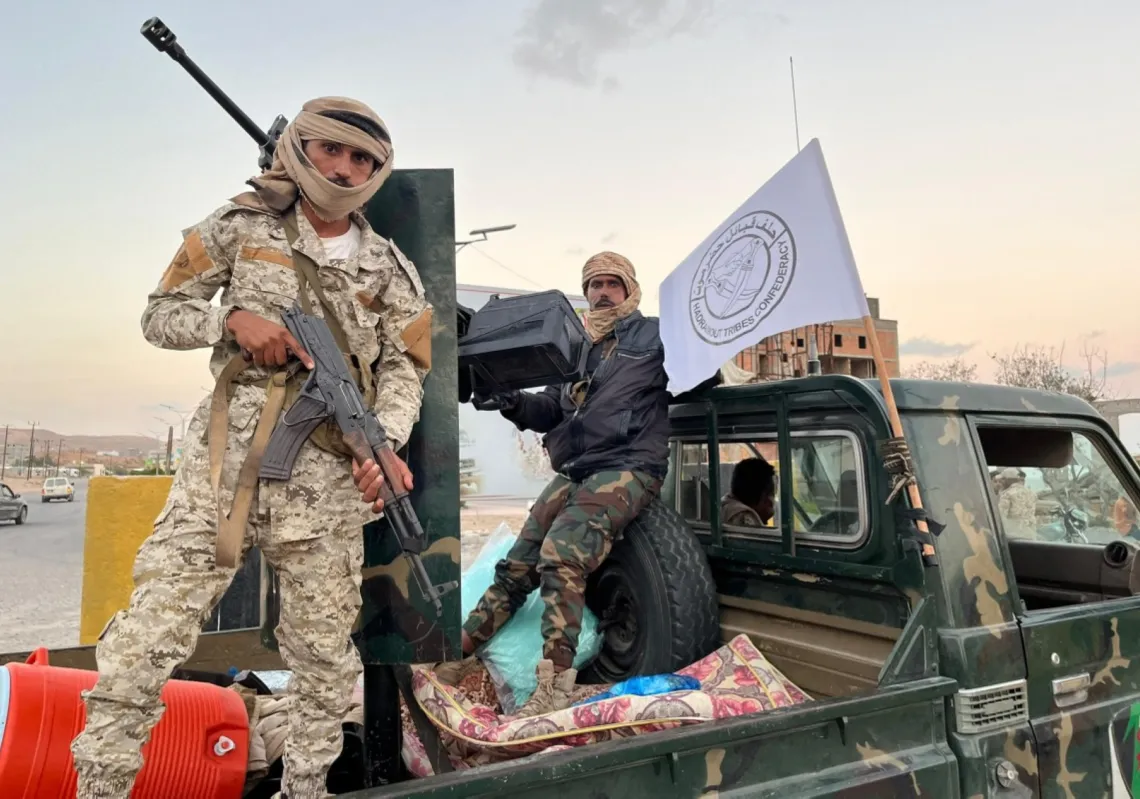 Unemployed Yemenis wait for work offers on a sidewalk in Sanaa, on April 6, 2013. Unemployment rates among young people in Yemen can reach as high as 40 percent. (MOHAMMED HUWAIS/AFP/Getty Images)[/caption]A fragmented society racked by poverty and instability, Yemen is facing a multitude of overlapping crises which all threaten not only its ability to recover economically and politically from 2011 revolution, but which also endanger the country's territorial integrity.
Unemployed Yemenis wait for work offers on a sidewalk in Sanaa, on April 6, 2013. Unemployment rates among young people in Yemen can reach as high as 40 percent. (MOHAMMED HUWAIS/AFP/Getty Images)[/caption]A fragmented society racked by poverty and instability, Yemen is facing a multitude of overlapping crises which all threaten not only its ability to recover economically and politically from 2011 revolution, but which also endanger the country's territorial integrity.
Yemen’s coalition government is caught in between a rock and a hard place, between the Houthis in the North and the Southern Secessionist Movement in the South. It has now understood that for stability to take hold, poverty will have to be tackled at a grassroots level.
For well over a decade, Yemen’s central government has had to deal with an increasingly violent and well-organized Houthi-led dissident movement in its northern territories. The Houthis are a reformed Shi’a rebel group based in the northern province of Sa'ada, now organized under their new political group, Ansar Allah (the Party of God). They have long justified their military stance by alleging that the state sought to politically and economically isolate Zaidi Muslims to better serve Saudi Arabia's hegemonic plan in the region. While Sana'a has always rejected such claims, sectarian tensions have continued to grow throughout the past decade, amplified by a breakdown in state institutions, corruption and harsh economic conditions.
Moreover, years of conflict have meant that tens of thousands of civilians were forced to flee their homes and seek refuge in refugee camps, thus creating a humanitarian crisis and a catalyst for further anger and recrimination. Between 2004 and 2010, more than a million people were affected by the Sa'ada wars. As established by the UN-sponsored news agency IRIN, "Some 227,000 continue to need humanitarian assistance in Sa’ada this year."
The February 2010 ceasefire brokered by the State of Qatar brought much-needed respite to Yemen, allowing officials to seek solutions to this protracted conflict. While 2011 brought all negotiations to a halt, the Arab Spring also offered the Houthis the opportunity to integrate mainstream politics by moving their fight away from the battlefield and into the political arena.
While this shift does not in itself hold a long-term solution, the change in rhetoric meant the 2010 truce caught on, returning some level of stability and normalcy to Yemen's Northern territories. As the drums of war fell silent, humanitarian aid workers returned to North Yemen. They were encouraged by the central government, as officials understood that aid would help promote stability, as well as generate hope and a desire for peace, better than state promises ever could.
Speaking on UNICEF’s program in Sa'ada, Hélène Kadi, UNICEF’s head of field operations and emergency operations, said: "The openness has happened in a gradual manner as trust has gradually been rebuilt. Thanks to structured discussions, we have been able to increase our work in Sa'ada, even if there can still be issues with security, coordination delays and the unpredictability of the situation.”
Ismail Ould Cheikh Ahmed, the International Committee of the Red Cross humanitarian coordinator for Yemen, echoed Kadi's optimism by confirming that the situation had indeed improved greatly in terms of both security and trust: “We have started a better conversation with the Houthis in the north who, in the past, were very difficult in terms of accepting international assistance and particularly assessment. There is much more opening and better discussion, and trust is building up in the north.”
Should the situation continue to improve and aid be allowed to flow to the region, officials are hoping that internally displaced persons (IDPs) will return and reinforce stability by spurring on reconstruction efforts.
It is now down to political will.
As noted by Mohamed Saad Harmal, IRIN’s assistant to the head of government’s Executive Unit for IDPs and camps, in the same article: “The displaced are hoping and willing to go back. But they don’t have livelihoods at the moment. They are really suffering. In the north, infrastructure, houses and farms have been destroyed—everything needs to be rehabilitated. The displaced cannot go back to nothing." While political negotiations will have to take place to permanently close the Yemen-versus-Sa'ada chapter, only through strong state institutions and services will the people be able to move on and embrace unity.
Better than any truce, prosperity will ensure that Yemen’s divided past remains confined to the history books. Representatives at Yemen National Dialogue Conference have been entrusted with the country's political and institutional future. It is down to the government to translate change on the ground through economic growth, aid distribution and the establishment of peaceful lines of communication with its regional partners.









